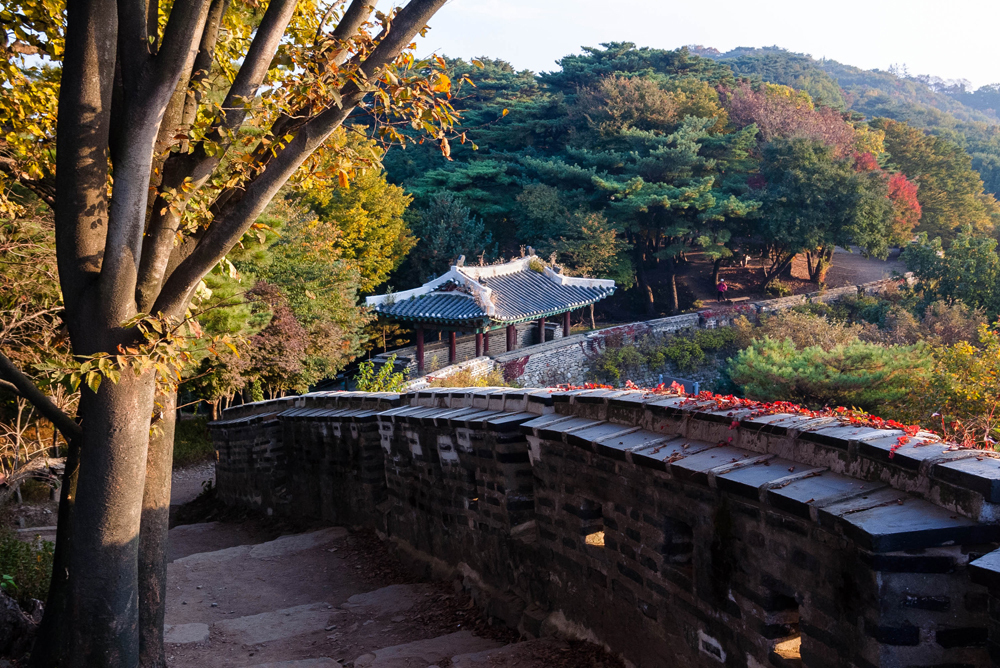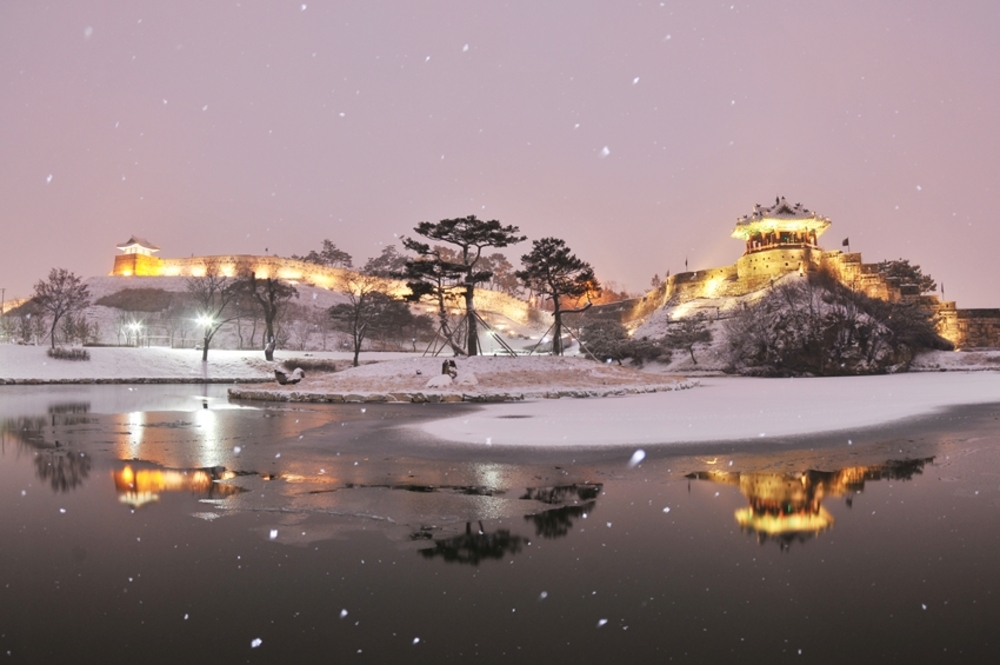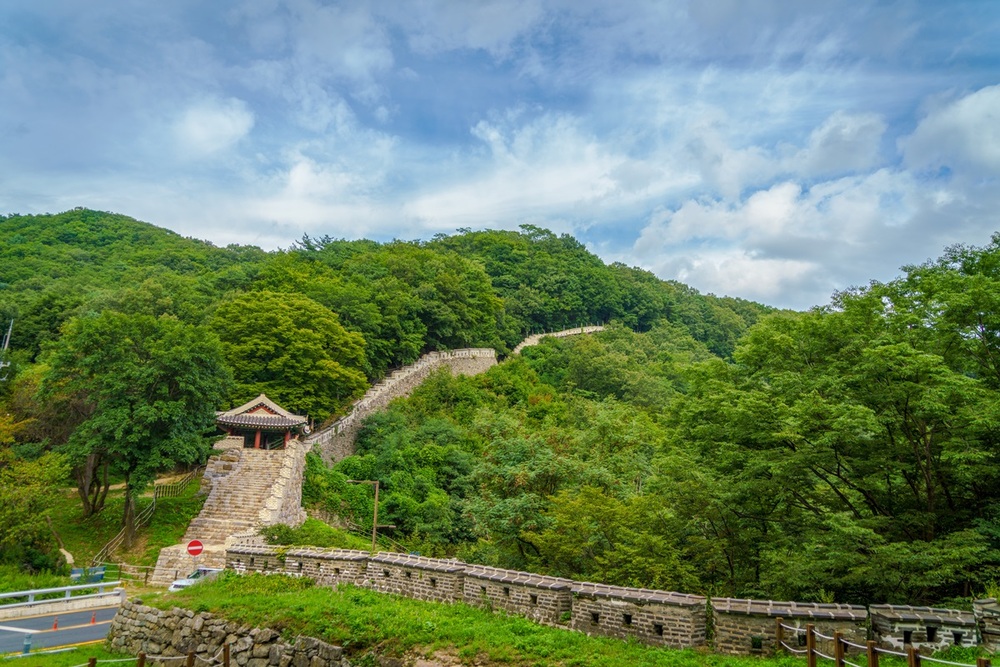Here are some beautiful and priceless UNESCO tangible cultural heritage sites in Gyeonggi Province.

Suwon Hwaseong
Hwaseong Fortress, constructed during the Joseon Dynasty, is located in Suwon City, Gyeonggi-do. Not only was its construction motivated by the filial piety of King Jeongjo for his father, but the fortress also symbolizes aspirations for strong royal authority. |
| Suwon Hwaseong Fortress ⓒGyeonggi Province |
Hwaseong Fortress was severely damaged during the Japanese occupation and Korean War, but most of it has been repaired and restored in accordance with Hwaseong Fortress Uigwe, which records the structural plans and systems as well as related laws and construction methods. The circumference of the castle is about 5,744 meters.
Suwon Hwaseong Fortress has retained the same framework as 200 years ago. The motive for its construction was not for military purposes, but more for political and economic considerations as well to express filial piety. For this reason, the fortress embodies ideological and philosophical values in addition to cultural values.
 |
| Suwon Hwaseong Fortress in winter ⓒGyeonggi Province |
Hwaseong Fortress was a new style of fortress that differed from the those built before it. The fortress introduced new defense facilities such as Poru and Gongsimdon through reference to foreign cases. This unique fortress was registered as a UNESCO World Heritage Site in 1997.
The old pine tree area near Hwaseong Fortress in Suwon was formed more than 200 years ago when King Jeongjo planted 500 pine trees and 40 willows by the tomb of his father, Crown Prince Sado. This is the road that King Jeongjo often used on the way to pay respect to his father.
Nowadays, the Hwaseong Tourist Train takes visitors around the fortifications. Suwon City offers a 10% discount (valid until December 31, 2021) at chicken restaurants if you use sports and cultural facilities such as the tourist train.
The Suwon Banghwa Suryujeong Pavilion, part of Suwon Hwaseong Fortress, served as both a military and resting facility and exemplifies pavilion technologies of the 18th century. It is famous for its moon, sunset, and night views.
 |
| Suwon Hwaseong Fortress at night ⓒGyeonggi Province |
Namhansanseong
Namhansanseong Fortress was a temporary emergency capital of the Joseon Dynasty. It incorporates various military defense technologies (reflecting influences of Far East Asia) and symbolizes the independence and sovereignty of the Korean people. |
| Namhansanseong in Gwangju City ⓒGyeonggi Province |
Namhansanseong Fortress synthesizes changes in fortification construction following the introduction of Western-style weapons while also embodying the influence of China and Japan. Of particular note, Namhansanseong Fortress stands as important evidence of the interactions undertaken by Korea in East Asia during the 16th and 18th centuries. Namhansanseong Fortress shows the evolution of construction technologies and changes in weapon systems from the 7th to 19th centuries.
Namhansanseong Dulle-gil has a total of five hiking trails with each course taking anywhere between 1 to 3 hours to complete. Among these, the 2nd course is relatively short, yet people use it most frequently because there are many things to see. It's a course that people of all ages can walk easily.
Cultural heritages like the Yeong-Woljeong Pavilion (the name meaning a pavilion that welcomes the moon) appear along the quiet trail.. A little further away from Yeong-Woljeong Pavilion, one can find Sunglyeoljeon Hall. If you descend from Sunglyeoljeon Hall, you can see Chiseongam Rock. Chwaseongam is referred to as "sobering rock,” as if a drunk person wakes up on their own when sitting on this rock. Such sites in Namhansanseong Fortress are accompanies by explanatory signage, making it easy for visitors to understand the history of the fortress.
 |
| Namhansanseong in Gwangju City ⓒGyeonggi Province |
Royal Tombs of the Joseon Dynasty
The Royal Tombs of the Joseon Dynasty, scattered throughout 18 regions, encompass a total of 40 tombs. These tombs, established over the span of 5 centuries from 1408 to 1966, are situated in outstanding natural landscapes, usually with water to the south and protective hills to the rear. They were prepared by choosing ideal spots surrounded by mountains in the distance. The Royal Tombs of the Joseon Dyansty mark the completion of 5,000 years of royal tomb construction on the Korean Peninsula.By applying the principles of geomancy and maintaining the natural landscape, a memorable sacred place for rituals was created. All relics surviving at these tombs have maintained their original functions and sanctity. A few entrances have changed, but most still retain their shape and design; therefore, the Royal Tombs of the Joseon Dynasty maintain their authenticity as a whole.
 |
| Seosamneung in Goyang City ⓒGyeonggi Province |
The tombs of many kings and queens can be found in Gyeonggi-do, including sites in the cities of Goyang, Guri, Gimpo, Namyangju, Yangju, Paju, and Hwaseong.






%205.jpg)
%202.jpg)
%206.jpg)
%2010.jpg)
%203.jpg)

COMMENTS